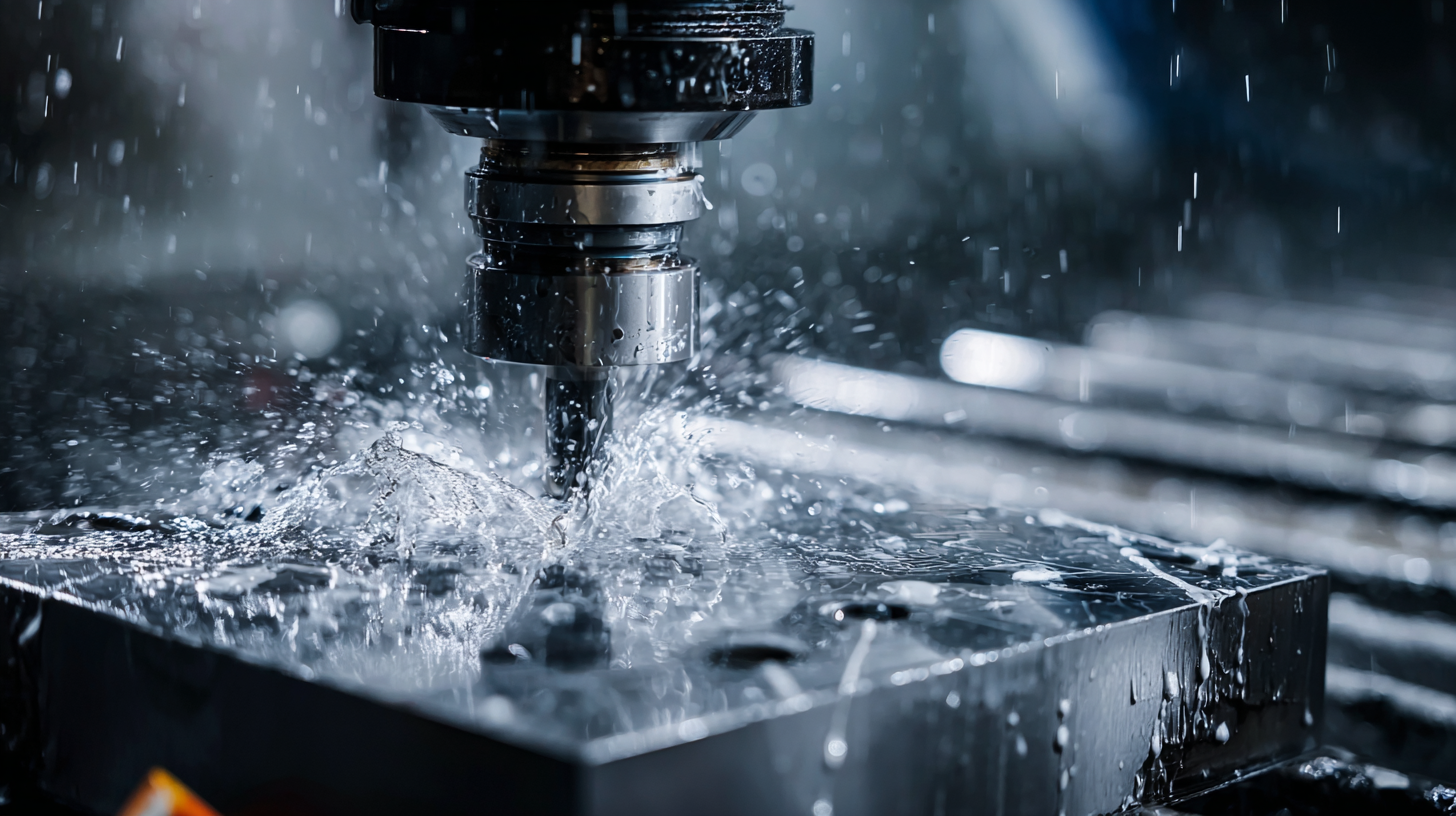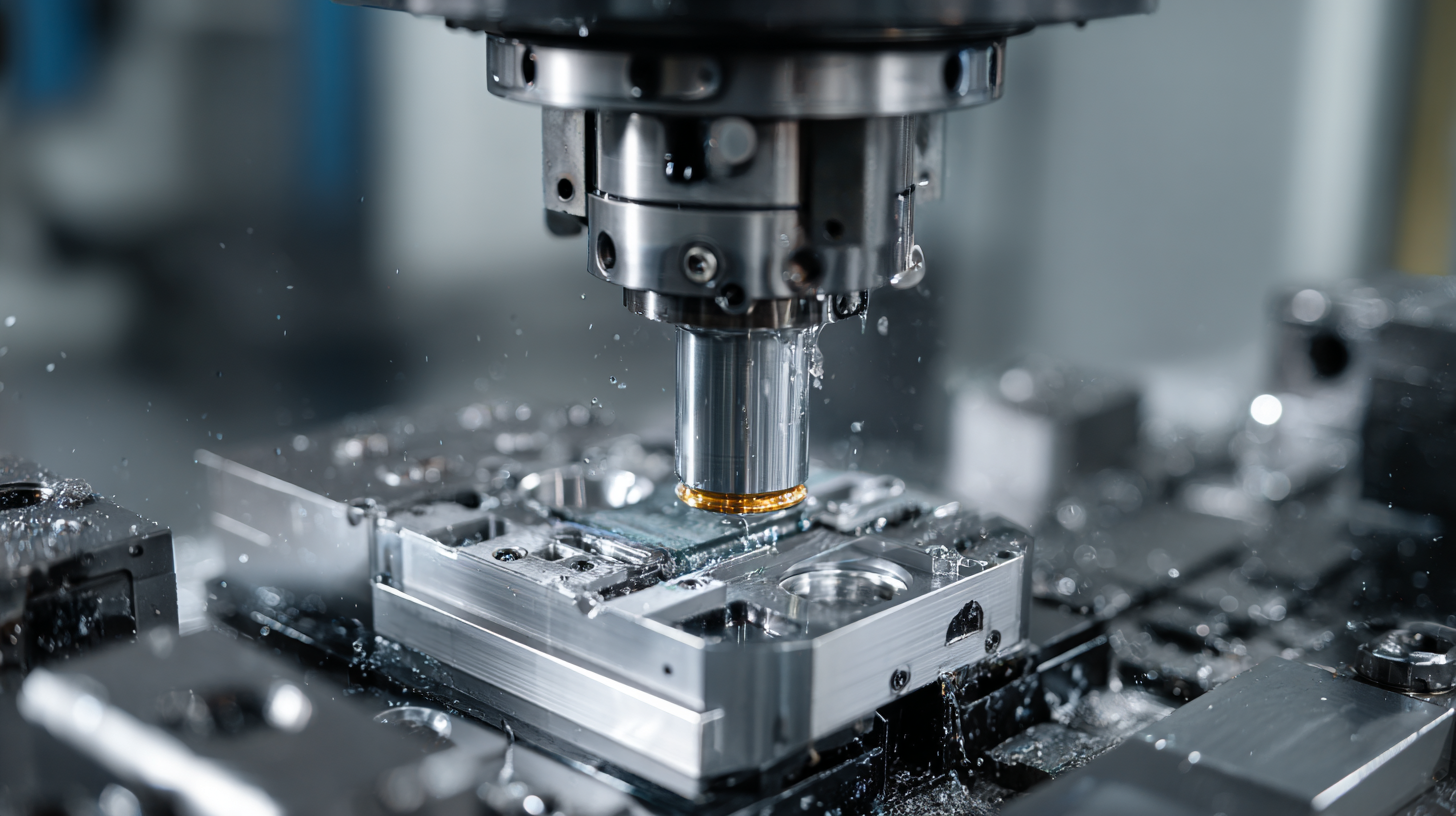As we look ahead to the technological landscape of 2025, the role of a proficient metal mold manufacturer becomes increasingly critical for companies aiming to innovate and streamline their production processes. According to a report by MarketsandMarkets, the global mold market is projected to reach $10.5 billion by 2025, driven by advancements in technology and increasing demand for lightweight and precise components across various industries. To navigate these changing trends effectively, businesses must identify reliable suppliers who not only understand the latest materials and techniques but also embody quality and efficiency. This guide will provide insights into finding a top-tier metal mold manufacturer, equipping you with the knowledge necessary to make informed decisions in a competitive marketplace.

In 2025, the metal mold manufacturing industry is poised to undergo significant transformations driven by key technology trends. One of the most prominent trends is the integration of advanced automation and robotics. Manufacturers are increasingly adopting automated systems to enhance production efficiency and precision. These technologies not only streamline operations but also minimize human error, resulting in higher quality molds and reduced lead times. As a metal mold manufacturer, staying ahead by investing in robotic process automation will be crucial to maintain competitiveness in a rapidly evolving marketplace.
Another critical trend is the rise of additive manufacturing, commonly known as 3D printing, which is revolutionizing how molds are designed and produced. This technology allows for greater flexibility in design, enabling manufacturers to create complex geometries that were previously unattainable with traditional methods. Additionally, 3D printing reduces material waste and shortens production cycles, providing a sustainable solution to meet the growing demands of various industries. Embracing additive manufacturing will not only enhance design capabilities but also position mold manufacturers as innovative leaders in the market.
Lastly, the advent of smart manufacturing and data analytics is reshaping the landscape of the metal mold industry. By leveraging IoT devices and real-time data monitoring, manufacturers can optimize their processes, predict maintenance needs, and improve overall productivity. The ability to analyze manufacturing data allows companies to make informed decisions and adapt swiftly to market changes. Thus, integrating smart technologies into operations will be essential for manufacturers aiming to thrive in the competitive environment of 2025.
In the fast-evolving landscape of metal mold manufacturing, automation and artificial intelligence (AI) are becoming essential tools to streamline production processes and enhance overall efficiency. By integrating these technologies, manufacturers can significantly reduce lead times, minimize human errors, and optimize resource allocation. Embracing automation allows for a seamless production flow, freeing up skilled workers to focus on more strategic tasks while robots handle repetitive and mundane operations.
**Tip 1:** Start small by implementing robotic systems on high-volume tasks to measure efficiency improvements before scaling up automation across the entire production line.
AI further elevates manufacturing capabilities by utilizing data analytics to predict maintenance needs and improve quality control. Smart systems can analyze performance metrics in real-time, enabling quick adjustments and proactive decision-making to avoid production delays. This not only enhances product quality but also increases operational agility in responding to market demands.
**Tip 2:** Invest in AI-driven software that monitors machinery performance, ensuring timely maintenance and reducing downtime, thereby maximizing production yield.
By harnessing the power of automation and AI, metal mold manufacturers can position themselves ahead of the competition, ultimately leading to improved production efficiency and a stronger market presence.
As we approach 2025, the importance of sustainable manufacturing practices in the metal mold industry cannot be overstated. With global initiatives aimed at reducing carbon emissions, manufacturers are increasingly integrating eco-friendly technologies into their operations. Reports from the World Economic Forum indicate that by 2025, the adoption of green manufacturing technologies can reduce energy consumption by up to 30%, significantly lowering production costs while minimizing environmental impact. Implementing renewable energy solutions, such as solar and wind power, will be crucial for mold manufacturers aiming to enhance their sustainability profile.

Furthermore, advancements in material science and recycling technologies are revolutionizing the way metal molds are produced. According to a study by the International Journal of Advanced Manufacturing Technology, using recycled materials can not only reduce waste but also decrease material costs by 45%. Additionally, the shift towards biopolymers and biodegradable materials is becoming a key trend in mold manufacturing, allowing companies to meet consumer demands for more sustainable products. Embracing these innovations will not only align metal mold manufacturers with global sustainability targets but also position them competitively in a rapidly evolving market.
The realm of metal mold manufacturing is undergoing a significant transformation, largely driven by advancements in materials science. As manufacturers strive for superior durability and efficiency, the integration of advanced materials has emerged as a game changer. Materials such as high-performance alloys, reinforced composites, and innovative polymers are not only enhancing the structural integrity of molds but also extending their lifecycle. These materials boast superior resistance to wear and thermal fatigue, enabling manufacturers to produce molds that can withstand the rigors of high-volume production without compromising on precision.
Moreover, the role of advanced materials extends beyond mere durability. They facilitate the design of more complex mold geometries, allowing for intricate shapes that were previously unfeasible with traditional materials. This capability opens up new avenues for creativity in product design, enabling manufacturers to tailor their molds to meet specific application demands. As a result, businesses that adopt these cutting-edge materials will not only achieve greater efficiency but also maintain a competitive edge in the rapidly evolving market of metal mold manufacturing.
| Material Type | Advantages | Applications | Durability Rating (1-10) |
|---|---|---|---|
| High-Strength Steel | Superior strength and toughness | Automotive, aerospace | 9 |
| Aluminum Alloys | Lightweight and corrosion-resistant | Consumer electronics, aerospace | 7 |
| Titanium Alloys | High strength-to-weight ratio | Medical devices, aerospace | 10 |
| Composite Materials | Excellent strength, light weight | Automotive, sporting goods | 8 |
| 3D-Printed Polymers | Complex geometries, fast production | Rapid prototyping, tooling | 6 |
As we look toward the future of manufacturing in 2025, leveraging digital tools for streamlined communication and collaboration will become increasingly essential. With the estimated global corporate collaboration market set to reach approximately $29.36 billion in 2025 and expected to grow to $44.05 billion by 2033 at a compound annual growth rate of 5.2%, manufacturers must adopt innovative collaborative approaches to stay competitive. Effective communication tools will not only enhance internal operations but also streamline the coordination of complexities involved in metal mold production.

Collaborative Office Automation (OA) plays a critical role in this transition, enabling seamless integration of daily operations, asset management, and information exchange within organizations. As the demand for unified communication and collaboration (UC&C) platforms rises, projected market growth to $150.42 billion by 2032—at a staggering 10.8% CAGR—serves as a clear indicator of the necessity for manufacturers to invest in these digital solutions.
Choosing the right remote collaboration tools will define the success of remote teams, helping to eliminate chaos and inefficiencies typical of unstructured workflows. Embracing these technologies can foster an environment of cooperation and alignment, paving the way for greater productivity and innovation in the manufacturing sector.
